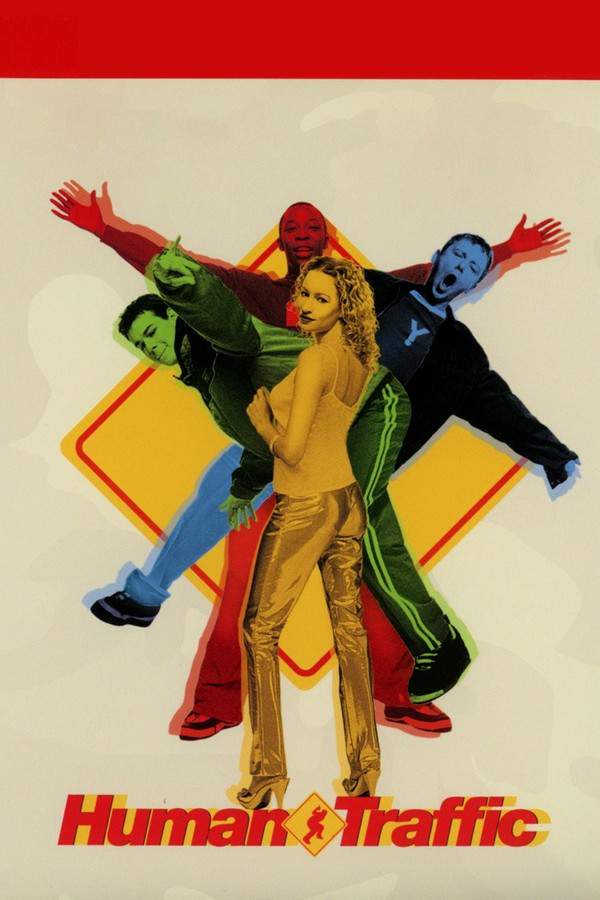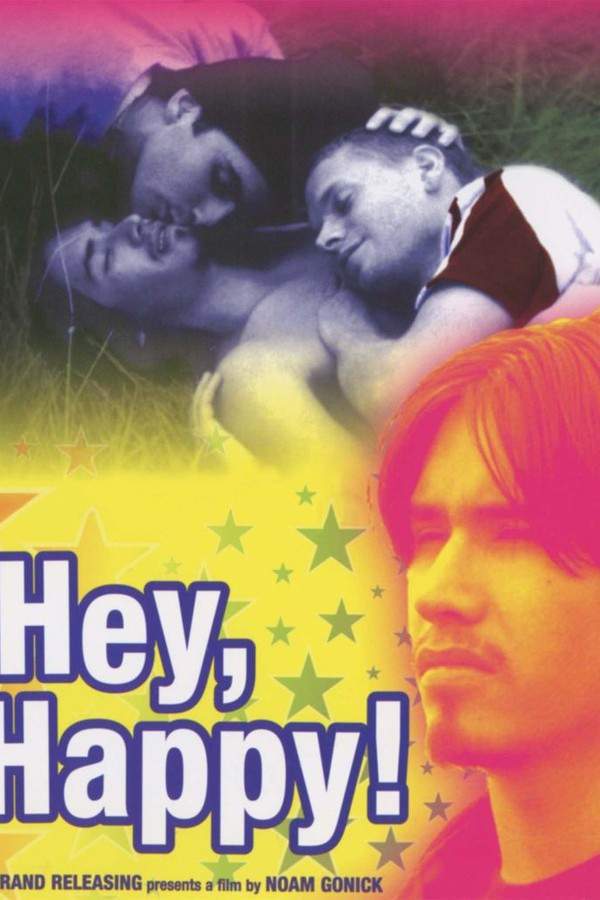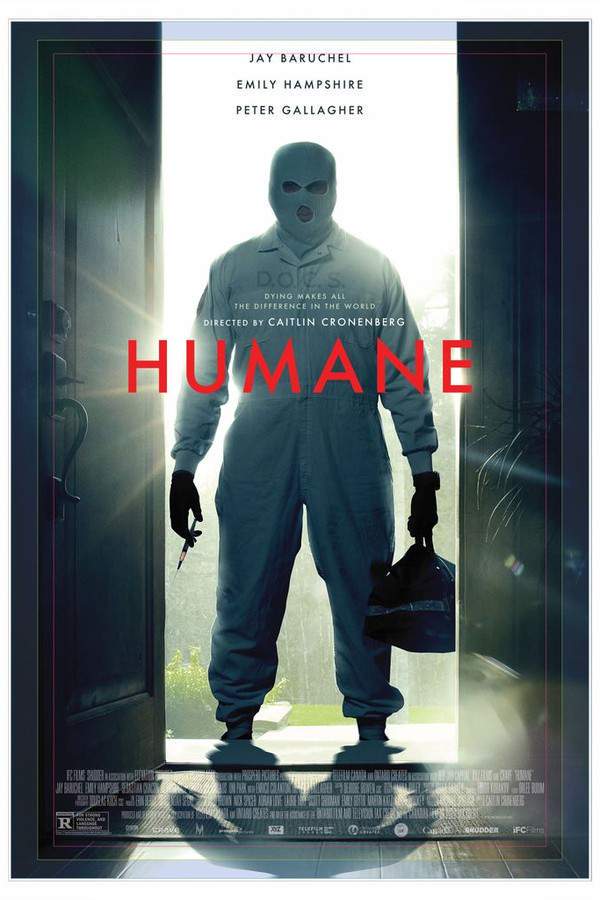
Human Highway
Year: 1982
Runtime: 88 mins
Language: English
When love and fate collide, the new proprietor of a rundown roadside diner in a town dominated by a perpetually leaking nuclear plant schemes to burn the building for the insurance payout. Yet his plans are thwarted by an eccentric cast of locals and surreal incidents, including inexplicable spaceships circling overhead.
Warning: spoilers below!
Haven’t seen Human Highway yet? This summary contains major spoilers. Bookmark the page, watch the movie, and come back for the full breakdown. If you're ready, scroll on and relive the story!
Human Highway (1982) – Full Plot Summary & Ending Explained
Read the complete plot breakdown of Human Highway (1982), including all key story events, major twists, and the ending explained in detail. Discover what really happened—and what it all means.
On a quiet morning in a fictional town perched beside a buzzing nuclear power plant, a small gas station-diner hums with the ordinary rhythms of everyday life. The people inside go about their routines, unaware that it is the last day on Earth. Lionel Switch Neil Young is the garage’s cheerful, bumbling auto mechanic who harbors a stubborn dream of becoming a rock star. Nearby, Otto Quartz Dean Stockwell manages the failing business after his father’s death, weighing a drastic plan to fire staff in order to cash out on an insurance claim. The duo navigates a day filled with small desires, tense decisions, and a peculiar sense that something extraordinary is about to unfold.
As the morning unfolds, Otto announces his intention to fire an employee for lack of money, a decision that ignites tension. Kathryn Sally Kirkland, the waitress who serves the diner’s customers, rebels against the idea, throwing a dramatic tantrum and taking refuge in a booth while a wall photo of Otto’s father looks on. The moment is underscored by the melancholy strains of the jukebox playing The End of the World, a foreshadowing refrain that casts a quiet doubt over the characters’ choices. Irene Geraldine Baron overhears Otto’s plan and pushes to be part of the scheme, sealing her involvement with a bold kiss that signals her willingness to play by her own rules.
Meanwhile, Lionel’s longing for Charlotte Goodnight Charlotte Stewart forms a tender counterpoint to the day’s mounting absurdities. Charlotte, who quietly harbors a crush on the milkman Earl Duke David Blue, reveals a different set of aspirations—she’s drawn to the everyday magic of simple, ordinary connections. Earl enters the diner in the wake of an earthquake, dressed in white and with a playful flirtation that tests Lionel’s feelings, while a local Arab sheik offers him wealth in exchange for “whiteness,” adding a surreal, satirical sting to the scene. The gong of fate rings louder as a limousine pulls up and a famously glamorous figure, Frankie Fontaine Neil Young, steps out, embodying a life of opulence, opiates, and celebrity that feels both distant and dangerously intoxicating.
In a moment of meta-cinema bravura, Lionel learns that Frankie is in the limousine, and he declares, with a mix of awe and swagger, that “Now there’s a real human being!” The encounter pushes Lionel toward a fever dream that follows him backstage and then onto the desert highway of his imagination. The dream slides into a rock-star fantasy: Lionel becomes a full-blown performer with a backup band of wooden Indians, moving through a surreal tour that glides between performance and reverie. Irene tends to Lionel in this fantasy by giving him a symbolic milk bath, a tactile moment that blurs the line between dream and waking life. The dream becomes a sprawling odyssey as the entourage travels by trucks through a sun-scorched desert, while the wooden Indians vanish from the lineup, leaving Lionel to fend for himself in a world of shifting allegiances and strange, shifting loyalties.
The desert sequence crescendos with a performance of Goin’ Back, as the surviving Native Americans gather around a bonfire to burn the missing wooden Indians. The ritual energy of the scene drifts into a long, ecstatic studio jam—Hey, Hey, My, My—performed by Devo alongside Lionel’s project, a union of two very different creative energies that mirrors the film’s blend of satire and reverie.
When Lionel awakens, the world seems to reassemble itself into a familiar yet suddenly fragile tableau. Booji Boy announces the hour of sleep, and the town—all friends, coworkers, and dreamers—rallies to face the approaching catastrophe with a strange, unyielding optimism. The cast unfolds a choreographed version of Worried Man Blues, a communal ritual that transforms fear into a celebratory, almost ceremonial response to annihilation. The Earth glows with radioactive light as the performers ascend a stairway to heaven, their ascent underscored by harp music that lends a sense of sacramental finality to the moment.
In the end, the film returns to the paradox at its core: a last-day myth that plays out as a kaleidoscopic celebration of art, friendship, and survival. Booji Boy Mark Mothersbaugh is revealed as the lone survivor among the wreckage, a wry, cynical voice that punctuates the credits and then dissolves into the present. The nuclear waste—a central, recurring image—gets normalized by the film’s exuberant performances and its willingness to turn catastrophe into a communal, almost festive ritual. The town’s people, and the performers who inhabit their world, keep dancing as the sky glows with the radioactive light of a world ending, a finale that refuses despair even as it acknowledges catastrophe.
The seams of the narrative are threaded by a chorus of unforgettable characters and performers, from Lionel Switch’s hopeful bravado to Otto Quartz’s pragmatic bravado, from Charlotte Goodnight’s quiet longing to the zany, fearless energy of Frankie Fontaine’s glamour. The film uses musical interludes, dreamlike sequences, and a satirical gaze at media, industry, and power to render a day that feels both intimate and mythic. It is a story about making meaning at the edge of oblivion, about choosing to celebrate life and art even as the world—literally—burns around you. And it leaves the viewer with a lingering sense of wonder: that even on the last day, human connection, music, and a little bit of absurd joy can endure.
Last Updated: October 09, 2025 at 14:55
Unlock the Full Story of Human Highway
Don't stop at just watching — explore Human Highway in full detail. From the complete plot summary and scene-by-scene timeline to character breakdowns, thematic analysis, and a deep dive into the ending — every page helps you truly understand what Human Highway is all about. Plus, discover what's next after the movie.
Human Highway Timeline
Track the full timeline of Human Highway with every major event arranged chronologically. Perfect for decoding non-linear storytelling, flashbacks, or parallel narratives with a clear scene-by-scene breakdown.

Similar Movies to Human Highway
Discover movies like Human Highway that share similar genres, themes, and storytelling elements. Whether you’re drawn to the atmosphere, character arcs, or plot structure, these curated recommendations will help you explore more films you’ll love.
Explore More About Movie Human Highway
Human Highway (1982) Scene-by-Scene Movie Timeline
Human Highway (1982) Movie Characters, Themes & Settings
Human Highway (1982) Spoiler-Free Summary & Key Flow
Movies Like Human Highway – Similar Titles You’ll Enjoy
Human Traffic (2000) Spoiler-Packed Plot Recap
Hey, Happy! (2002) Movie Recap & Themes
Humane (2024) Film Overview & Timeline
The Highwayman (2000) Complete Plot Breakdown
Highway 61 (1991) Ending Explained & Film Insights
Highway to Hell (1991) Complete Plot Breakdown
Nothing Lasts Forever (1984) Complete Plot Breakdown
Hyper Space (1989) Full Summary & Key Details
Honky Tonk Freeway (1981) Detailed Story Recap
Mondo Hollywoodland (2021) Full Summary & Key Details
The Trip (1967) Plot Summary & Ending Explained
The Humanoid (1979) Full Movie Breakdown
The Human Duplicators (1965) Full Summary & Key Details
HWY: An American Pastoral (1970) Full Movie Breakdown
The Drivetime (1995) Ending Explained & Film Insights

















